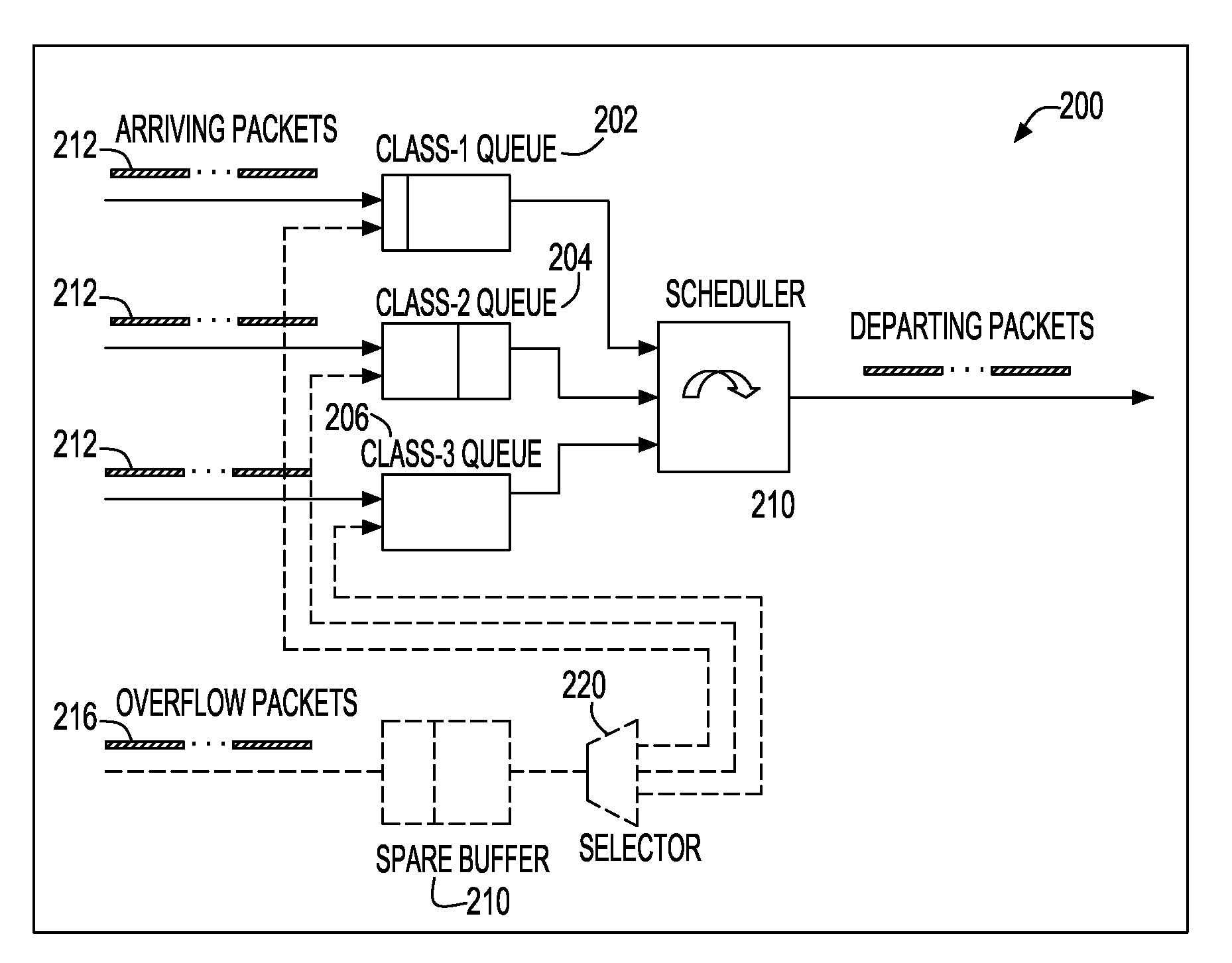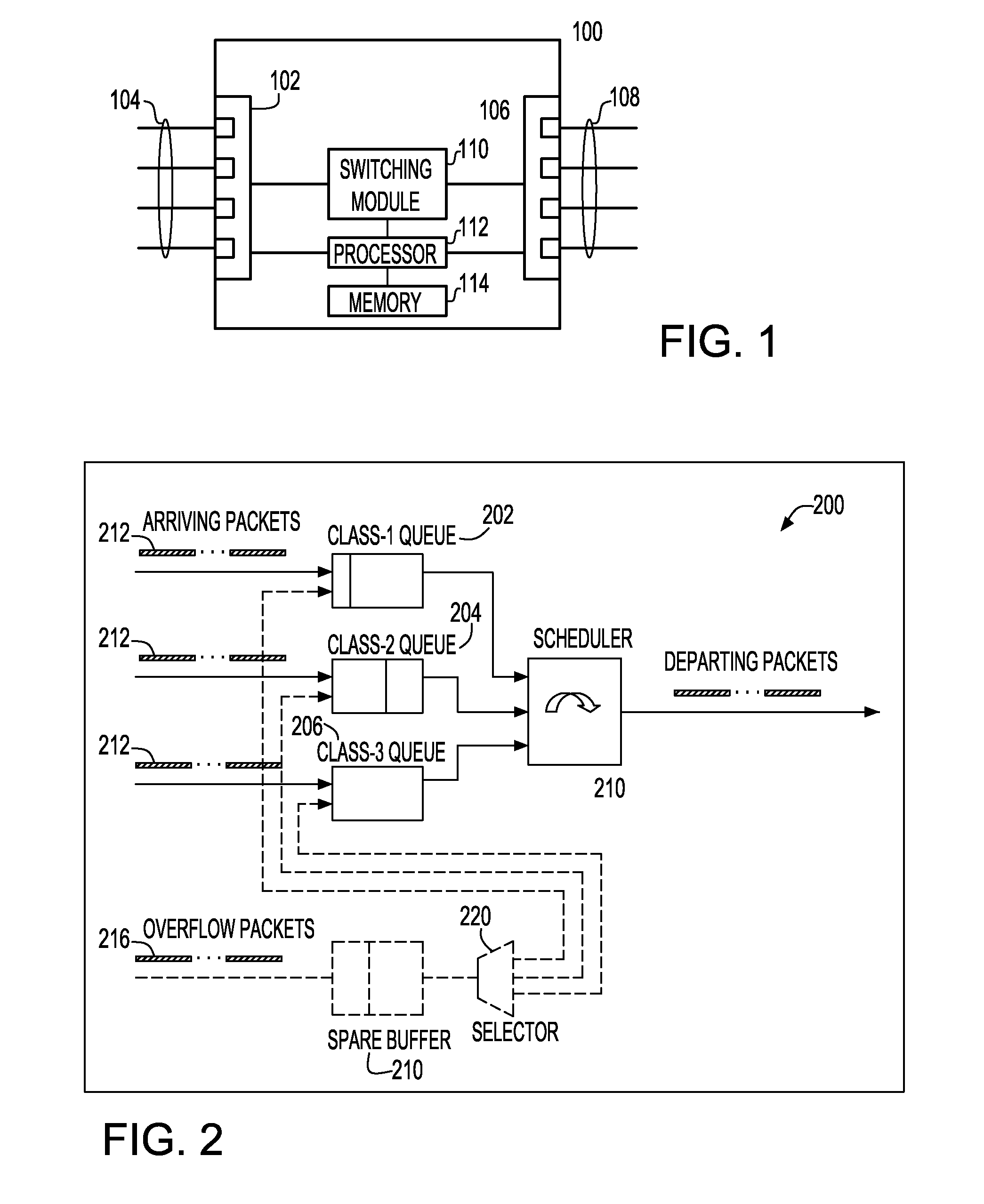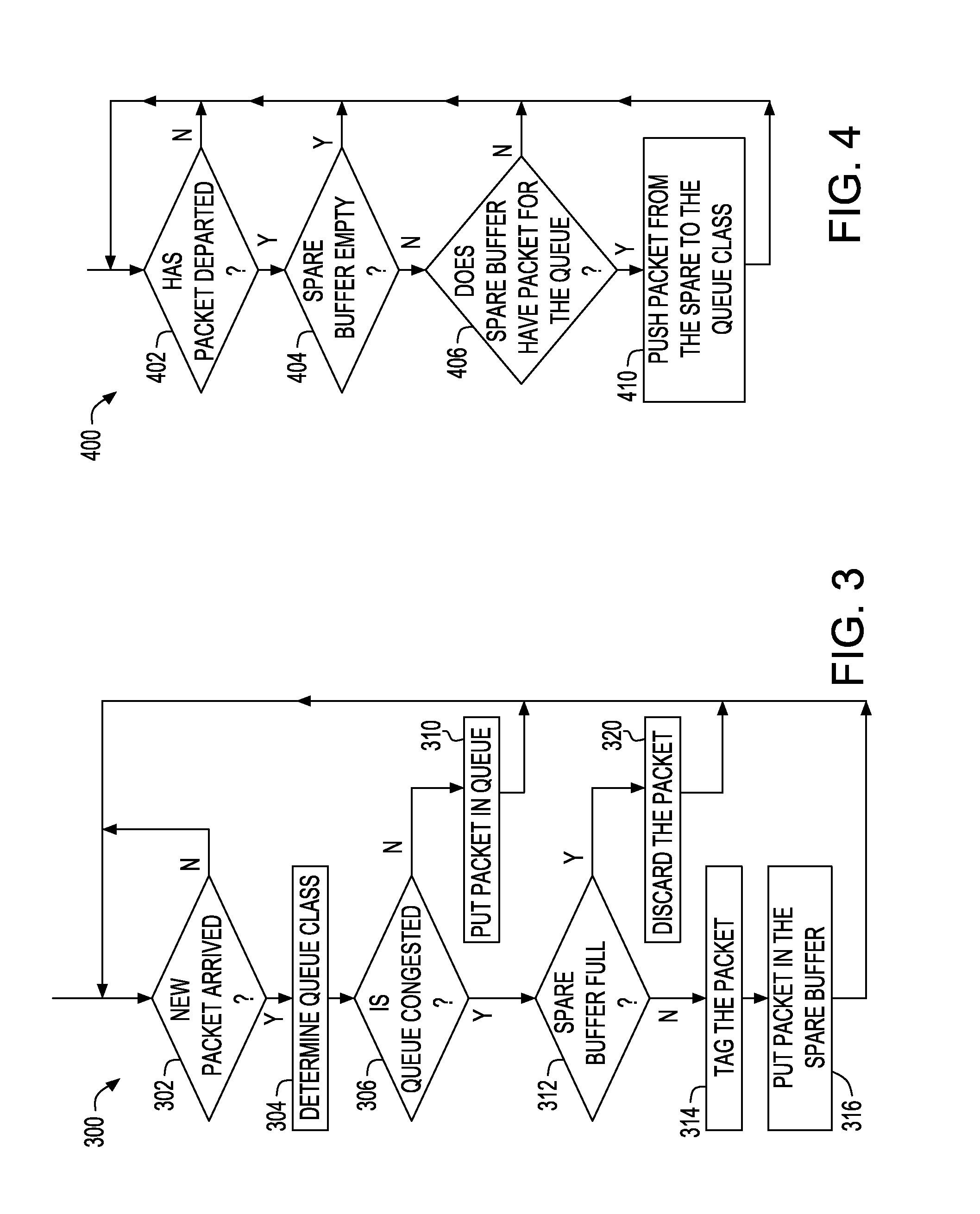Buffer allocation method for multi-class traffic with dynamic spare buffering
a buffer allocation and multi-class technology, applied in data switching networks, frequency-division multiplexes, instruments, etc., can solve the problems of increasing system load, limited buffer size, and node being able to output data packets at a rate sufficient to keep up, so as to improve the buffering method
- Summary
- Abstract
- Description
- Claims
- Application Information
AI Technical Summary
Benefits of technology
Problems solved by technology
Method used
Image
Examples
Embodiment Construction
[0018]FIG. 1 shows a block diagram of a network node 100 in which the present invention may be utilized. Network node 100 includes input ports 102 for receiving data packets from input links 104. Network node 100 also includes output ports 106 for transmitting data packets on output links 108. Switching module 110 is connected to input ports 102 and output ports 106 for switching data packets received on any input link 104 to any output link 108. A processor 112 is connected to a memory unit 114, input ports 102, switching module 110, and output ports 106. The processor controls the overall functioning of the network node 100 by executing computer program instructions stored in memory 114. Although memory 114 is shown in FIG. 1 as a single element, memory 114 maybe made up of several memory units. Further, memory 114 may be made up of different types of memory, such as random access memory (RAM), read-only memory (ROM), magnetic disk storage, optical disk storage, or any other type ...
PUM
 Login to View More
Login to View More Abstract
Description
Claims
Application Information
 Login to View More
Login to View More - R&D
- Intellectual Property
- Life Sciences
- Materials
- Tech Scout
- Unparalleled Data Quality
- Higher Quality Content
- 60% Fewer Hallucinations
Browse by: Latest US Patents, China's latest patents, Technical Efficacy Thesaurus, Application Domain, Technology Topic, Popular Technical Reports.
© 2025 PatSnap. All rights reserved.Legal|Privacy policy|Modern Slavery Act Transparency Statement|Sitemap|About US| Contact US: help@patsnap.com



